Home » Health
Total Pageviews
Popular Posts
-
Samantha Ruth Prabhu is an Indian film actress and model who appears in Telugu and Tamil films. Born to Malayali and Telugu parent...
-
Alia Bhatt wears Velvet and georgette dress, by Nikhita 'Landy' striped silk-ribbon gown, Alice + Olivia by Sta...
-
Engineering Technician (Petroleum) This is a great opportunity for those desiring the challenge of the fast-paced o...
-
1. Deepika Padukone DeepikaPadukone, daughter of celebrated badminton player Prakash Padukone, isone of the most preferred model...
-
The ad urges you to run for life, climb, glide, breathe and jump. I am serious. The corny copy apart, this is a well-executed film ful...
-
It is important to pay attention to what we eat to keep our skin clean and not too oily. Acne usually occurs when we are teenagers and e...
-
The Bagh Ibne Qasim is located in Clifton, Karachi, Sindh, Pakistan. Inaugurated by President Pervez Musharraf on February 27, 2007, Pakis...
Followers
World's First Weight Loss Perfume - Prends-Moi
12:02 AM |
Forget about painful diets and grueling exercise, from now on all you
have to do to lose weight is spray on a little perfume. The magic
fragrance is called Prends-Moi and is said to contain beta-endorphins
that reduce the urge to overeat.
Developed by the French perfume house Robertet, the Veld's Prends-Moi
slimming fragrance was launched last year, but only recently made its
debut on the English market, where women welcomed it with open arms.
Tips For Dark Skin
11:53 PM |
Dark skin can be a bane for people who crave a fair complexion. Though a
lot of people have naturally dark skin, darkening of skin could also be
due to hyperpigmentation and various other reasons. A dark colored skin
has more of skin pigment Melanin, as compared to a fair skin.
Unfortunately, increased quantity of melanin can cause the skin to look
blemished and patchy.
Dark Skin Symptoms
The symptoms for dark skin include a dark brown to blackish skin. This
could be coupled with blemishes or dark patches on the skin.
Dark Skin Causes
The causes for a dark skin or complexion could be many. Some of the most
common ones are - Heredity People who have a dark skin often have
children who are dark-skinned too. The genes seem to pass on from
generation to generation.
Hyperpigmentation
In this condition the skin produces too much of the pigment melanin, causing the skin to become darker than usual.
Skin disorders
Conditions such as Lichen Simplex Chronicus is a skin disorder that
causes severe itching that leaves the skin thick, dark and patchy.
Sun rays
Over exposure to sun causes the skin to tan. This is a natural
mechanism, wherein to protect itself from the harmful UV rays of the
sun, the skin produces more of the pigment melanin which shields the
penetration of UV rays into the skin.
Home Remedies & Tips for Dark Skin
Here are some simple home remedies that you can do to lighten the skin
tone and get a lighter complexion. However, they must be done regularly
and best results are obtained if they are inculcated as a part of daily
routine.
Mix 1 tsp of milk powder, 1 tsp of honey, 1 tsp of lemon juice, and ½
tsp of almond oil. Apply on face and wash off after 10-15 minutes. This
pack helps bring shine to the skin and also removes tan. Mix oatmeal
with curd and tomato juice and apply on the face. Keep it on for 20
minutes and then wash it off with cold water. It helps remove the tan
and lightens the skin.
Place sliced raw potato on the face. It helps reduce blemishes and other marks.
Applying turmeric powder along with lime juice removes the tan. Lime juice is a natural bleach.
Dried orange peels mixed with curd also help reduce blemishes and scars. Wash off this mixture with cold water after 15 minutes.
Soak 4 almonds overnight. Grind into a fine paste using milk. Apply on
face and neck and leave it overnight. Wash with cold water in the
morning. Do this daily for 15 days, followed by twice a week.
A tbsp of gram flour mixed with 2 tsp of raw milk and 2-3 drops of lime
juice works well for lightening dark skin. Apply this mixture and leave
it for 15 minutes before washing off. Repeat for 4 weeks and follow up
with once a week.Apply a paste of fresh ground mint leaves and leave it
for about 20 minutes. Wash with cold water, continue for 15 days.
Apply a mixture of grated tomato with 2-3 drops of lime juice on the
face. Leave it for 20 minutes before washing off. Do this twice a day
for 15-20 days for best results.
Balanced Diet
Although there are no particular foods that will lighten your skin
instantly, a balanced diet definitely helps by giving your skin a
healthy glow. Drinking an optimum amount of water hydrates your skin and
keeps it blemish free.
Avoid excessive consumption of heavy and oily foods.
Incorporate whole cereals, pulses, fresh fruits and vegetables in your diet.
Drink at least 4-5 liters of water every day. Water washes out the toxins from the body
Best Diet Plan to Get Rid of Acne
11:43 PM |
It is important to pay attention to what we eat to keep our skin clean and not too oily. Acne usually occurs when we are teenagers and ends when we get older. What is worrying now is the fact that acne does not always stop when we start to become mature. Research shows that 50% of adult women are still experiencing acne. And for the men have a lower percentage of 25% only. A woman’s chance to have acne adult continues to increase along with their menstrual period (adult acne). One of the most effective natural way to eliminate acne is the acne diet, so you do not need to buy expensive acne products valuable.
What is Acne
Acne is a skin disorder that is caused by clogged pores, they can occur
in many places such as face, necks, chest, back, shoulders and upper
arms. It is the one of the most common and persistent skin disorder.
Pimples or Acne mostly affects teenagers; these groups are most
vulnerable as they experience hormone changes in these times. However
they are not limited to teenagers, they can also manifest in adults or
child alike.
Causes of Acne
Acne causes can be attributed to many things; here are some things that you can avoid to help you prevent Acne:
One is sleep deprivation or irregular sleeping habits. This can
elevate you’re stress levels and can lead to acne break outs.
Eating habits, there are a lot of debates about this. But
nevertheless it is better to change you’re eating habits since you will
benefit from it in the long run. Do not eat a lot of fatty, sugar and
starch rich food.
Chronic constipation, is can also lead to acne break outs. A if
waste is not eliminated quickly then your blood stream may suffer from a
high level of toxic matter.
Acne Diet Plan
Foods full of zinc

Zinc is generally suggested through health professionals when designing a
good ‘acne free of charge diet’ like a health supplement with regard to
decorating your skin. It has been established to possess effective
pores and skin recovery qualities and it is particularly efficient
within treating acne breakouts. A few meals which are full of zinc tend
to be seafood and also the different types of spend seafood, such as
oysters. With regard to breakfast every day, consider whole wheat
tiniest seed or even whole wheat bran. It’s also wise to consider your
own zinc nutritional vitamins frequently. Do not overdo this although,
we want just little amounts of the nutritional.
Limit Your own Consumption Associated with Carbohydrates
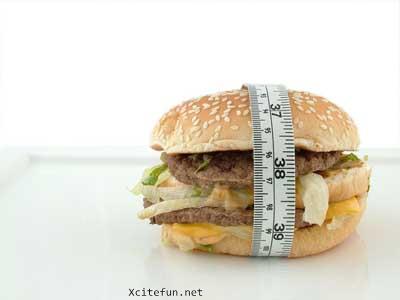
Although you should not reduce your own carb consumption significantly,
attempt to keep your percentage associated with carbs in what you eat
towards the additional nutrition from 50 % for the most part. If you’re
able to withstand along with actually much less, a lot the greater. With
this issue, it will likely be recommended in order to talk to an
authorized nutritionist and perhaps obtain he or she recommendations on
which carbs you need to prevent totally as well as those you need to
consume small amounts. Keep in mind that a few starchy meals include
additional nutrition, as well as these types of nutrition might be much
more good for your own acne breakouts compared to carbs these people
include tend to be harmful into it.
Drink Green Tea Extract Regularly
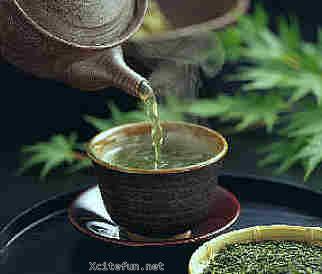
Green teas may come with an inhibitory impact on the actual
manufacturing associated with androgens. Should you didn’t understand
however, acne breakouts may end up being triggered within puberty
through the improve release associated with man the body’s hormones or
even androgens. This particular hormone encourages the actual
development associated with cells, such as locks, Along the way
associated with developing much more as well as heavier strands
associated with locks. Your body frequently reveals by itself in order
to microbial episodes in the atmosphere. These types of microorganisms
key in with the tiny lesions on the skin within the pores and skin
brought on by the actual development associated with heavier and much
more several fur. Within servings from the entire body exactly where you
will find less essential oil glands, the actual germs are often
expelled using the perspiration. Nevertheless, within individuals areas
of the body exactly where essential oil glands proliferate, these types
of germs are usually caught underneath the pores and skin exactly where
these people proliferate as well as trigger acne as well as comes to
look.
Stay Away from Junk Food as Well as Restaurants

In your own acne breakouts diet plan, you need to cease completely your
own consumption associated with meals which have been prepared along
with trans fat as well as greasy fat. Dining places as well as junk food
tend to be locations exactly where you will probably consume absolutely
nothing which was not prepared as well as overcooked along with
individuals kinds of natural oils.
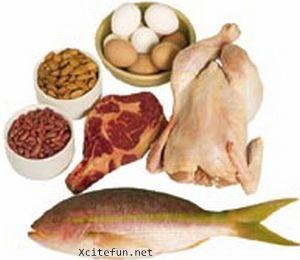
Eating much more meats compared to carbs could be contributive in order
to managing your own acne breakouts simply because they reduce the
actual secretions from the sweat or even essential oil gland as well as
reduce the actual clogging of the follicles.
Eat Meals Full of Chromium
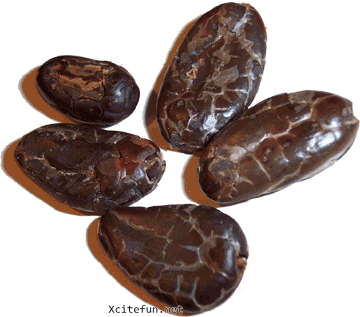
Like zinc, chromium is actually an additional nutrient that’s efficient
with regard to fighting pores and skin bacterial infections. Even though
such as chromium in what you eat doesn’t really apply any kind of
impact on lowering your acne breakouts, performing which will a minimum
of recover your own lesions on the skin rapidly. You discover lots of
chromium within beef, entire grains, vegetables and fruit. Dark wine,
broccoli as well as garlic clove ought to be elements of the normal
foods in your acne breakouts diet plan simply because these types of
genuinely have higher chromium content material. Desserts as well as
starchy meals tend to be lower in chromium. Which means this is actually
an additional cause that you should substitute the majority of your own
carb consumption the truth that easy carbs tend to be lacking within
chromium.
How to Apply Eye Cream
4:24 AM |
The skin around the eyes is much more tender than the rest of the face.
No wonder you are so careful to deal with it. A good eye cream is all
but superfluous.
The skin around the eyes is five to ten times thinner that the rest of
the facial skin. Moreover, they provide less of fluid (the blood vessels
and lymphatic are much thinner and less numerous).
The condition of your skin needs to be as best as possible and it can
only be done with lots of care, it’s best around the age of 25 when it
begins to lubricate.
Tips for use:
Apply the cream on the bottom of the eye socket of bone.
The cream should never be placed above the eyes.
Apply the cream with a light pulsating motion.
Start at the inner corner beating and beat slowly to the outer corner (i.e. in the direction of lymph flow).
Thus, the active substances to the skin around the eyes and the
extra ingredients easily transported away through the lymph nodes.
Do not apply cream directly under the eyelashes, it can get into your eyes, and a lot of irritation may result.
Use an eye cream from the same brand as your moisturizer, the active substances in the two creams complement each other on.
Apply the moisturizer on the eye cream, because not all eye creams have a protective effect of a moisturizer.
15 Energetic And Healthy Foods For Kids
4:21 AM |
Amazingly
nutritious foods you should always have in your kitchen and fridge and
how to serve them so your child will eat them without a fuss.
1. Tomatoes
This one wins hands down because every tomato packs a big dose of
lycopene, an antioxidant related to lower rates of cancer and heart
disease. Tomatoes also contain loads of vitamins C and A,
disease-fighting phytochemicals, and a fair amount of fibre especially
in our diet in which tomatoes are exceeded only by potatoes! If your
child won’t eat them fresh, grill them lightly with a little oil
lycopene absorption is actually greater when tomatoes are cooked.
2. Paneer
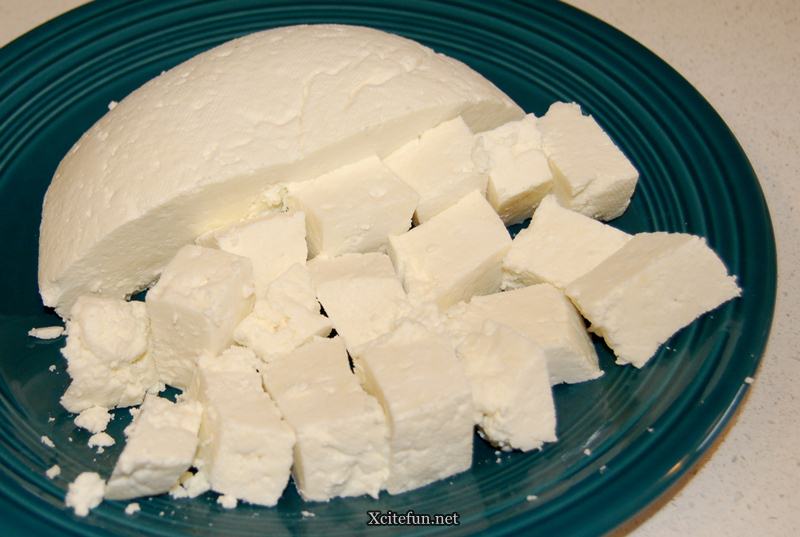
paneer or cottage cheese is a mighty source of milk protein, besides
calcium, iron and vitamins A and C. It is also not so high in bad
cholesterol levels and saturated fats. The calories your child gets from
paneer depends on how it is cooked: Served in a salad or lightly
sautéed it is low in calories, but if fried, it can be calorific.

Meat is the preferred source of protein for non-vegetarians and a lean
white meat like chicken is the top choice: It has lower levels of
cholesterol, saturated fats and trans-fats than red meats. It is rich in
iron and a good source of vitamins A, E and K, some B vitamins, along
with minerals such as iron, calcium and sodium. And chicken is a
favourite with children.
4. Wheat Chapattis
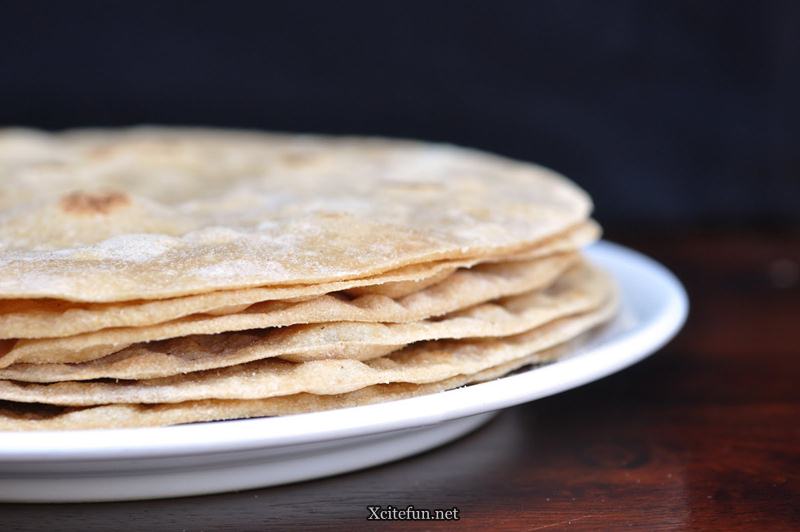
Whole-wheat flourWhole-wheat chapattis are an important source of
energy, carbohydrates, protein and fibre. They also contain a range of
nutrients such as vitamin E, some B vitamins and minerals including
sodium, iron, calcium, magnesium and zinc. With almost no saturated fats
or cholesterol, they can be eaten with a meal or in a snack.
5. Bananas

Bananas are nutritional powerhouses, bursting with potassium, fibre and
vitamin C. They also contain beta-carotene, a range of B vitamins,
calcium, magnesium. They have no saturated fat or cholesterol. Contrary
to popular perception, they are also low in calories (only 100 in a
medium banana). They also contain pectin, a type of soluble fibre, which
is believed to help lower “bad” cholesterol levels. A single banana has
1-2g protein and 30-36g carbohydrate and so can be considered as a
complete nourishing meal in itself. The high levels of natural sugar in
the banana provide an energy boost and the potassium in it is essential
for muscle and nerve performance.
6. Orange

Orange juiceOrange juice is full of vitamins A, C and E, many B
vitamins, folic acid, calcium and other essential minerals as well as
phytochemicals. It is now being fortified with Omega-3 and Omega-6 fatty
acids that are healthy for the heart. However, a glass a day is enough,
or you may pack in too many calories.
7. Milk and Oat
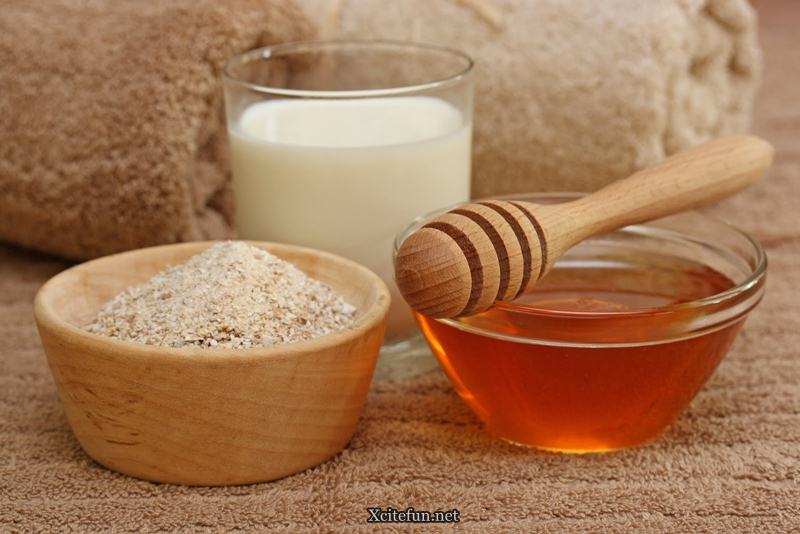
whether made of oats or dalia, is a great start to the day for your
child as it’s high in carbohydrates and fibre and low in saturated fats.
This high-energy food is filling for the stomach and is good for your
child’s metabolism. Besides, porridge provides calcium, phosphrous and
protein for the growth of the bones. For making a more wholesome meal of
this morning energy-booster, you can also add fresh or dried fruits and
nuts to your child’s porridge. Leave the sugar out.
8. Fruit-veggie Salad
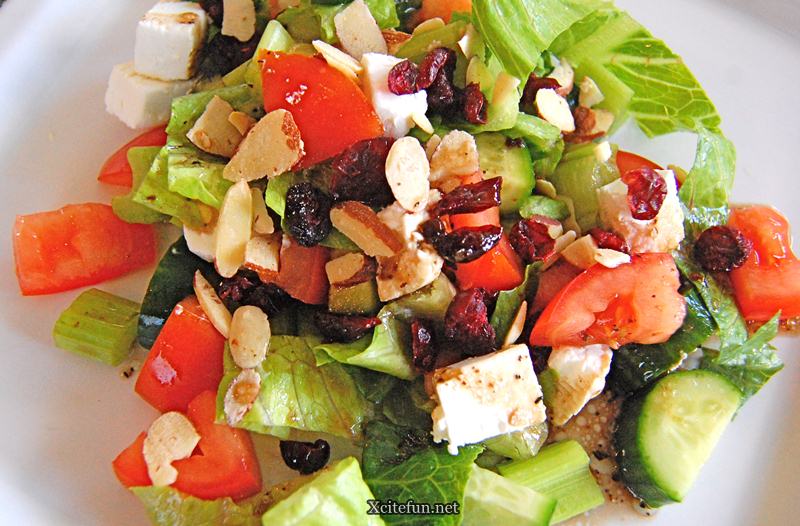
Fruit-veggie chaatChop a banana, a boiled potato and a tomato into a
bowl, sprinkle a little chaat masala and a dash of lemon juice and what
you have is a tasty treat full of vitamins, antioxidants and lots of
power packed energy for your child. You can add peanuts for a crunchy
zing. It’s a quick, nourishing snack for any time of the day, with all
the goodness of bananas and tomatoes, plus the added appeal of potatoes,
which most children relish.
9. Flavoured yogurt
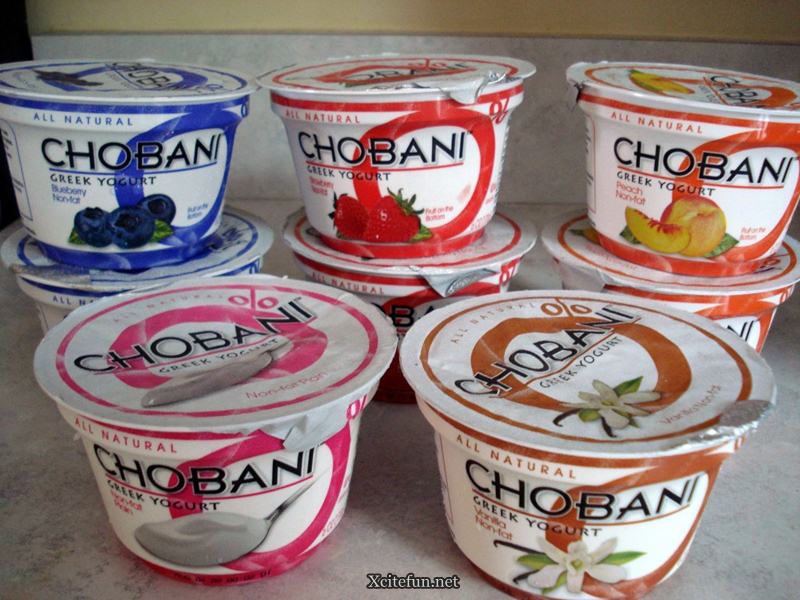
Fruit-flavoured yogurt smoothie (straight or frozen somewhat like a
sorbet) is full of calcium, protein and loads of probiotics. Yogurt is
also low in calories – just don’t add too much sugar to it. Sweetened
yogurt preparations are an ideal substitute for ice creams, making a
wholesome, nutritious treat if your child has a sweet tooth.
10. Almond
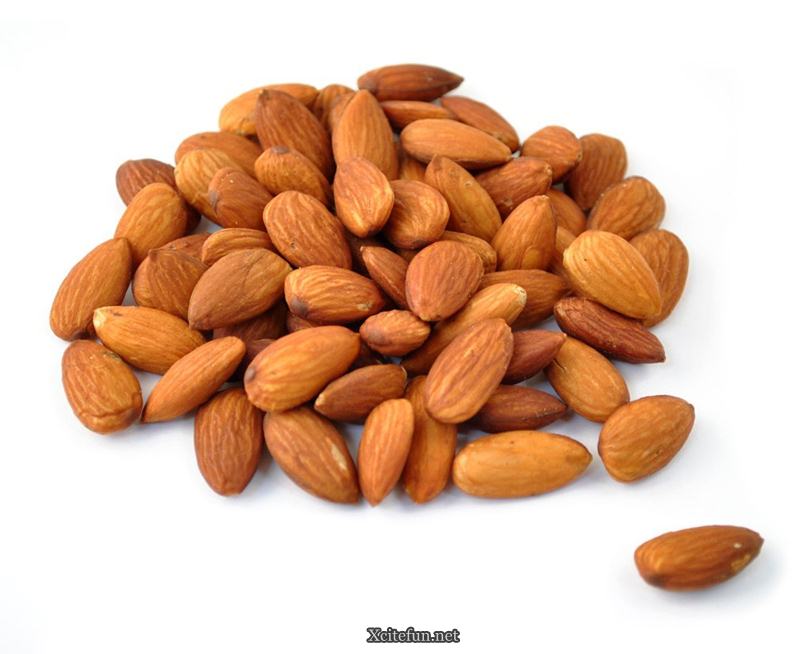
Almonds are the stars of the nut family. Rich in heart-healthy
phytochemicals and vitamin E, they also have B vitamins, fibre and
calcium. They lower bad cholesterol and boost good cholesterol levels,
and are an excellent source of Omega-6 fatty acids and proteins. Whole
nuts can be a chocking hazard for children under 3 years, so grind them
fine
11. Amla

It’s the miracle fruit, though it has to be disguised because it’s very
sour and has a bitter edge. Amla has anti-ageing and immunity-enhancing
properties, that make it a very important food for children. Ayurvedic
practitioners have used it for treating a range of ailments such as
indigestion, fever, liver problems, anaemia, hay fever, arthritis,
cataract and even cancer.
12. Spinach
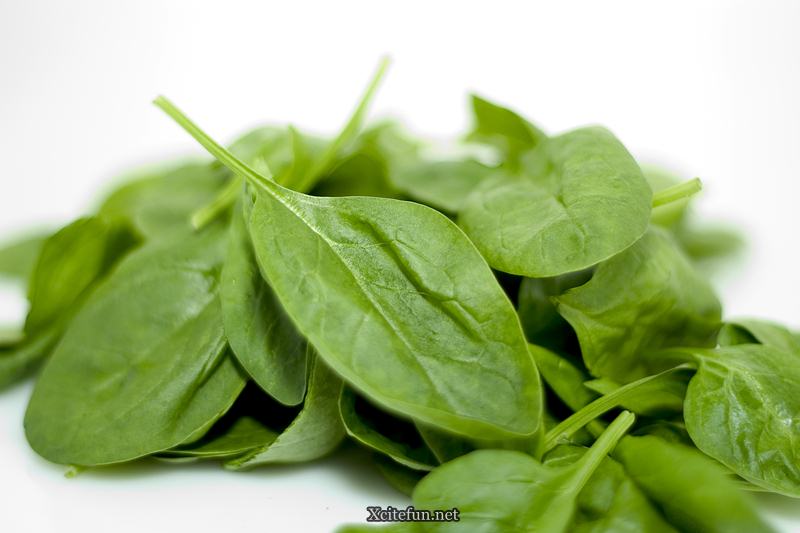
Spinach Popeye’s
favourite is jam-packed with iron, vitamin A, C and E, protein, and
folic acid, besides calcium and fibre. Sneak it into a pasta sauce,
puree it into a tomato sauce or shred it into dal.
13. Fenugreek
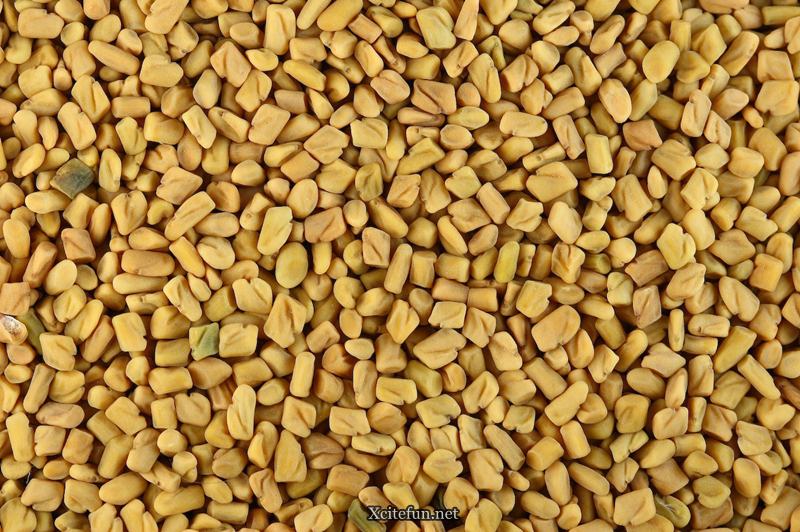
Fenugreek is rich in calcium, iron, vitamins C and A, and sodium. It’s
also a good source of fibre. Because it is a little bitter, it’s best to
use a little at first to develop your child’s taste buds.
14. Carrots
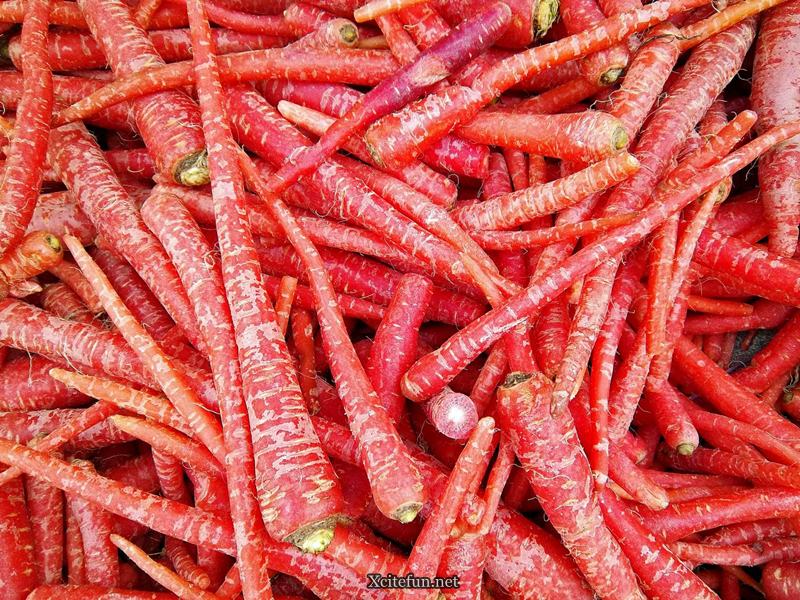
Carrots are nature’s wonder drug, for the beta-carotene that turns into
vitamin A in the body. They are rich in vitamins A, C and E, some B
vitamins, and minerals like calcium, potassium, copper, iron and
magnesium.
15. Peanuts
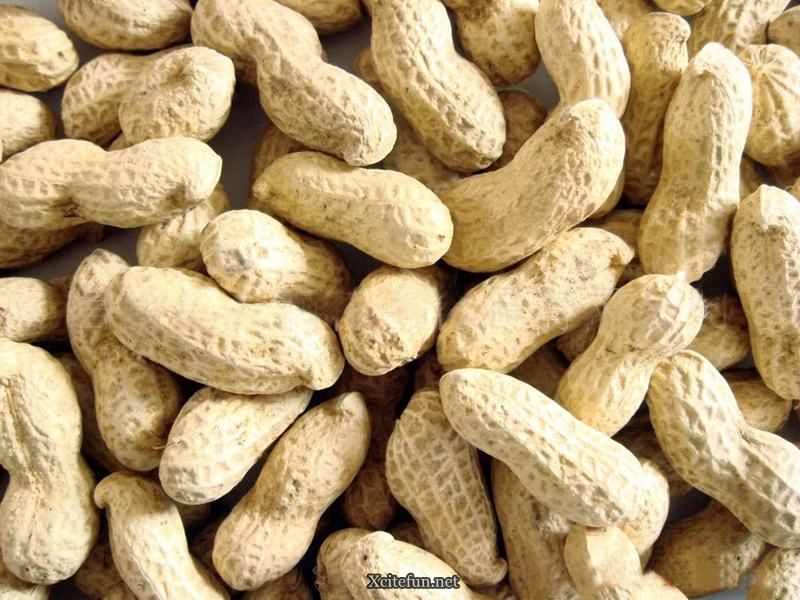
peanuts is a good sources of high-quality protein and essential
minerals. While dal in some form is a regular at Pakistani meals peanuts
boost the crunchiness of salads.
Leg Pain Can Mean Heart Danger, Expert Says
2:15 AM |
David Dow thought he was having back problems, and that his legs were
hurting as a result. As it turns out, that pain may have saved his life.
An otherwise healthy 57-year-old, he figured he just needed to learn
some back-strengthening exercises, so he found a personal trainer to
help him. But despite the workouts, his leg pain
got worse making it hard for him even to walk from the car to the
grocery store entrance. He and the trainer suspected something else was
wrong and he sought the advice of his doctor.
Soon his doctor's tests revealed the true cause: blockages in the blood
vessels of his legs. In fact, the arteries going to his lower
extremities were nearly 100 percent blocked. The cause? Years of heavy
smoking and high-fat meals, and other factors had caused cholesterol, scar tissue and blood clots to build up inside his blood vessels.
Most people think this kind of clogged artery disease, or
arteriosclerosis, only happens in the heart. But as Dow's case shows, it
can happen throughout the body. When it does, it's called peripheral arterial disease, or PAD.
And in some people, PAD causes leg pain that acts as an 'early warning' that someone is at high risk for a heart attack or a stroke, says a University of Michigan Cardiovascular Center expert.
"This is the hallmark of a disease that's all over," says James Stanley,
M.D., a director of the U-M CVC and the vascular surgeon who operated
on Dow. "It's like gray hair you don't just get it on one side of your
head. So if you've got this kind of blockage in your leg, you're going
to have it other places."
In fact, nearly a quarter of people who have leg pain due to PAD will be
dead in five years, mostly due to heart attacks and other heart
problems, Stanley says. For people like Dow, whose leg pain kept them
from walking even short distances, the odds are even worse: as many as
half will die by five years.
Fortunately, Dow got diagnosed and treated before that happened to him.
Stanley performed a bypass operation to open his blocked leg arteries,
similar to the bypasses that heart patients have. A recent checkup
showed he's doing well.
"For sure, it's a wake-up call," says Dow, who has quit smoking and changed his eating habits. "You know that old saying, 'Where there's smoke, there's fire'? I'm
sure that I not only have the vascular issues in my lower extremities, but I'm sure I have them in other parts of my body."
Dow isn't alone, says Stanley, who has operated on thousands of patients
with severe PAD in his decades as a professor of vascular surgery at
the U-M Medical School. Nearly 30 million people in the United States
have some form of PAD, though the vast majority are "silent" cases that
don't cause symptoms. Among people over age 70, nearly one person in
five has PAD.
What Is Neuropathy? Neuropathy Causes And Treatments
2:12 AM | |
| Diabetic Neuropathy |
Neuropathy is a collection of disorders that occurs
when nerves of the peripheral nervous system (the part of the nervous
system outside of the brain and spinal cord) are damaged. The condition
is generally referred to as peripheral neuropathy, and
it is most commonly due to damage to nerve axons. Neuropathy usually
causes pain and numbness in the hands and feet. It can result from
traumatic injuries, infections, metabolic disorders, and exposure to
toxins. One of the most common causes of neuropathy is diabetes.
Neuropathy can affect nerves that control muscle movement (motor nerves)
and those that detect sensations such as coldness or pain (sensory
nerves). In some cases - autonomic neuropathy - it can affect internal
organs, such as the heart, blood vessels, bladder, or intestines.
Pain from peripheral neuropathy is often described as a tingling or
burning sensation. There is no specific length of time that the pain
exists, but symptoms often improve with time - especially if the
neuropathy has an underlying condition that can be cured. The condition
is often associated with poor nutrition, a number of diseases, and pressure or trauma, but many cases have no known reason (called idiopathic neuropathy).
In the United States, about 20 million people suffer from neuropathy.
Over half of diabetes patients also suffer from the condition.
How is neuropathy classified?
Peripheral neuropathy can be broadly classified into the following categories:
- Mononeuropathy - involvement of a single nerve. Examples include carpal tunnel syndrome, ulnar nerve palsy, radial nerve palsy, and peroneal nerve palsy.
- Multiple mononeuropathy - two or more nerves individually affected.
- Polyneuropathy - generalized involvement of peripheral nerves. Examples include diabetic neuropathy and Guillain-Barre syndrome.
Neurophathies may also be categorized based on a functional
classification (motor, sensory, autonomic, or mixed) or the type of
onset (acute - hours or days, subacute - weeks or months, or chronic -
months or years).
The most common form of neuropathy is (symmetrical) peripheral
polyneuropathy, which mainly affects the feet and legs on both sides of
the body.
What causes neuropathy?
About 30% of neuropathy cases are considered idiopathic, which means
they are of unknown cause. Another 30% of neuropathies are due to
diabetes. In fact, about 50% of people with diabetes develop some type
of neuropathy. The remaining cases of neuropathy, called acquired
neuropathies, have several possible causes, including:
- Trauma or pressure on nerves, often from a cast or crutch or repetitive motion such as typing on a keyboard
- Nutritional problems and vitamin deficiencies, often from a lack of B vitamins
- Alcoholism, often through poor dietary habits and vitamin deficiencies
- Autoimmune diseases, such as lupus, rheumatoid arthritis, and Guillain-Barre syndrome
- Tumors, which often press up against nerves
- Other diseases and infections, such as kidney disease, liver disease, Lyme disease, HIV/AIDS, or an underactive thyroid (hypothyroidism)
- Inherited disorders (hereditary neuropathies), such as Charcot-Marie-Tooth disease and amyloid polyneuropathy
- Poison exposure, from toxins such as heavy metals, and certain medications and cancer treatments
Who gets neuropathy?
Risk factors for peripheral neuropathy include several conditions and
behaviors. People with diabetes who poorly control their blood sugar
levels are very likely to suffer from some neuropathy. Autoimmune
diseases such as lupus and rheumatoid arthritis also increase one's
chance of developing a neuropathy. People who have received organ
transplants, AIDS
patients, and others who have had some type of immune system
suppression have a higher risk of neuropathy. In addition, those who
abuse alcohol or have vitamin deficiencies (especially B vitamins) are
at an increased risk. Neuropathy is also more likely to occur in people
with kidney, liver or thyroid disorders.
Baby boomer alcohol harm 'more likely than in young'
2:05 AM |
More NHS money is spent treating alcohol-related illness in baby boomers than young people, a study says.
The Alcohol Concern report found the cost of hospital
admissions linked to heavy drinking 55 to 74-year-olds in 2010-11 was
more than £825m.
That was 10 times the figure for 16 to 24-year-olds.
In total, nearly £2bn was spent on alcohol-related in-patient admissions in England, the report found.
This comes as more than 10 million people in England are drinking above the recommended levels, according to the report.
The sum spent on treating the baby boomer generation went on
454,317 patients, compared with the 54,682 under-24s who were treated at
a cost of £64m.
Problem drinking is a contributing factor for a host of
diseases, including liver, kidney and heart disease, as well as
increasing the risk of injury.

In many ways the findings are not surprising as the effects of drinking are more likely to catch up with people later in life.
'Expensive care'
But the charity said part of the reason for compiling the
report, which was based on NHS figures, was to break down the data by
individual local authority area.
The figures have been collated in a clickable map.
It hopes the information, compiled with funding from drug
company Lundbeck, will be used by councils next year when they take
responsibility for problem drinking as part of their new remit covering
public health under the shake-up of the NHS.
Alcohol Concern chief executive Eric Appleby said he hoped
they would use the findings to help them focus their energy on schemes
to tackle problem drinking.
"It is a common perception that young people are responsible
for the increasing cost of alcohol misuse, but our findings show that in
reality this is not the case.
"It is the middle-aged, and often middle-class drinker,
regularly drinking above recommended limits, who are actually requiring
this complex and expensive NHS care."
Liver disease expert Sir Ian Gilmore, a former president of
the Royal College of Physicians, who has long campaigned about alcohol
misuse, agreed. He said: "It is the unwitting chronic middle-aged
drinkers who are taking serious risks with their health."
Teen smoking: 10 ways to help teens stay smoke-free
1:57 AM |Want to prevent teen smoking? Understand why teens smoke and how to talk to your teen about cigarettes.
Teen smoking might begin innocently, but it can become a long-term
problem. In fact, most adult smokers begin smoking as teenagers. Your
best bet? Stop your teen from taking that first puff. Follow these tips
to help prevent teen smoking.
No. 1: Understand the attraction
Teen smoking can be a form of rebellion or a way to fit in with a
particular group of friends. Some teens light up in an attempt to lose
weight or to feel better about themselves. Others smoke to feel cool or
independent. Ask your teen how he or she feels about smoking and if any
of your teen's friends smoke. Applaud your teen's good choices, and talk
about the consequences of bad choices. You might also talk with your
teen about how tobacco companies try to influence ideas about smoking —
such as showing smoking in movies to create the perception that it's
glamorous.
No. 2: Say no to teen smoking
You might feel as if your teen doesn't hear a word you say, but say it
anyway. Tell your teen that smoking isn't allowed. Your disapproval
might have more impact than you think. Teens whose parents set the
firmest smoking restrictions tend to smoke less than do teens whose
parents don't set smoking limits. The same goes for teens who feel close
to their parents.
No. 3: Set a good example
Teen smoking is more common among teens whose parents smoke. If you
don't smoke, keep it up. If you do smoke, quit — now. The earlier you
stop smoking, the less likely your teen is to become a smoker. Ask your
doctor about ways to stop smoking. In the meantime, don't smoke in the
house, in the car or in front of your teen, and don't leave cigarettes
where your teen might find them. Explain how unhappy you are with your
smoking, how difficult it is to quit and that you'll keep trying until
you stop smoking for good.
No. 4: Appeal to your teen's vanity
Smoking isn't glamorous. Remind your teen that smoking is dirty and
smelly. Smoking gives you bad breath and wrinkles. Smoking makes your
clothes and hair smell, and it turns your teeth yellow. Smoking can
leave you with a chronic cough and less energy for sports and other
enjoyable activities.
No. 5: Do the math
Smoking is expensive. Help your teen calculate the weekly, monthly or
yearly cost of smoking a pack a day. You might compare the cost of
smoking with that of electronic gadgets, clothes or other teen
essentials.
No. 6: Expect peer pressure
Friends who smoke can be convincing, but you can give your teen the
tools he or she needs to refuse cigarettes. Rehearse how to handle tough
social situations. It might be as simple as saying, "No thanks, I don't
smoke." The more your teen practices this basic refusal, the more
likely he or she will say no at the moment of truth.
No. 7: Take addiction seriously
Most teens believe they can stop smoking anytime they want. Teens,
however, become just as addicted to tobacco as do adults — often quickly
and at relatively low doses of nicotine. Once you're hooked, it's tough
to quit.
No. 8: Predict the future
Teens tend to assume that bad things only happen to other people.
Explain the potential long-term consequences of smoking — such as
cancer, heart attack and stroke. Use loved ones, friends, neighbors or
celebrities who've been ill as real-life examples.
No. 9: Think beyond cigarettes
Smokeless tobacco, clove cigarettes (kreteks) and candy-flavored
cigarettes (bidis) are sometimes mistaken as less harmful or addictive
than are traditional cigarettes. Hookah smoking — smoking tobacco
through a water pipe — is another alternative sometimes touted as safe.
Don't let your teen be fooled. Like traditional cigarettes, these
products are addictive and can cause cancer and other health problems.
Many deliver higher concentrations of nicotine, carbon monoxide and tar
than do traditional cigarettes.
No. 10: Get involved
Take an active stance against teen smoking. Participate in local and
school-sponsored anti-smoking campaigns. Support efforts to make public
places smoke-free and increase taxes on tobacco products, which can help
reduce the odds that your teen will become a smoker.
If your teen has already started smoking, avoid threats and ultimatums.
Instead, find out why your teen is smoking — and discuss ways to help
your teen quit. Avoiding or stopping smoking is one of the best things
your teen can do for a lifetime of good health.
Eat Yourself Sexy, Smart and Sorted
5:24 AM |
We
all know that you are what you eat but did you know that as well
changing your looks, food can also affect the way you feel? “Everything
from the state of your skin and hair to your concentration levels and
moods can be improved by eating healthy, tasty, nutritious foods,” says
celebrity nutritionist Amanda Ursell.
Faddy diets and junk food can make you lethargic and depressed, but
taking control of what you eat means taking control of your life.
1) Eat Yourself…Smart!
It’s
tempting to comfort-eat during exams or before a big meeting, but
treating your body to the nutrients that make you bright and alert means
you’ll get results you deserve. Foods rich in Omega 3 oils are vital
for our brains to work fully.
• Fish: The best food for Omega 3 is salmon. Have it canned, baked or
smoked in salads but limited your intake to a couple of times a week.
• Walnuts: Nibble brain-enhancing walnuts instead of sweets, which give a sugar rush and then a crash.
• Spaghetti with leafy greens or beans: A good night’s
sleep before an important event is vital. A meal of slowly digested
carbohydrates like pasta is a great option. Moreover, the leafy greens
such as spinach contain iron which you need for energy. You can also
substitute the pasta with brown rice.
• Milk: Milky drinks also boost shut-eye. Avoid caffeine or cola at night as they hinder sleep.
2) Eat Yourself…Happy!
As
a human being with the stresses of everyday life, your body is flushed
with hormones, which can result in mood swings that seem out of control.
However, eating right can keep you on a happy, even keel.
• Cereal: Insufficient iron is linked to low moods so
tuck into fortified cereals. It is absolutely vital to eat breakfast-if
you don’t, you’ll feel irritable by 11am. In addition, skipping
breakfast can play havoc with your metabolism and could even make you
put on weight.
• Brown Bread, Whole wheat chapattis, fruit and vegetables:
Stick to whole meal food and carbohydrates that are digested slowly for
a steady flow of energy. Whole wheat bread, chapattis, oats, whole
wheat pasta, fruits and vegetables are great options.
• Turkey and Cottage cheese (Paneer): These help boost the feel good brain hormone, serotonin.
3) Eat Yourself…Popular!
Eating
foods that make your skin glow, your skin shiny and your eyes sparkle
mean you’ll be confident enough to get people close to you-and everyone
is attracted to confidence!
• Fruits and nuts: Oranges, kiwis, berries, carrots and
tomatoes, along with olive oil, nuts and seeds, will boost skin, hair,
nails and eyes. They’re packed with vitamin C and super nutrients
beta-carotene and lycopene.
• Popularity also means feeling good around people so avoid foods that make you bloated.
Eat slowly, chew carefully and avoid fizzy drinks to beat bloating.
Cabbage, onions and baked beans can play havoc with the digestive system
and make you windy-not good in a social situation!-so avoid them.
4) Eat Yourself…Kissable!
Kissability
is about more than pricey lipgloss: it’s about having a mouth that’s
healthy on the inside too. It can be tempting to reach for the chewing
gum to give you confidence, but gum only masks problems without fixing
them.
• Parsley: Opt for a natural breath freshener. Parsley
can make breath fresh and sweet. The green pigment called chlorophyll
takes care of bad odors. It’s perfect if you’ve had stinky food on a
date!
• Milk: Healthy teeth and gums result in a flirty
smile. Drinking milk or soy milk with added calcium will give you
strong, white teeth. Avoid coffee or cola as they stain your teeth.
• Ginger: Head over to a juice bar and down a drink
containing citrus fruits and ginger. It will boost your circulation,
making your cheeks rosy and your lips appear bigger!
Cranberry juice may beat kids' bladder infections
10:31 PM |
Cranberry juice rich in certain antibacterial substances may help
prevent repeat urinary tract infections in kids, a small study suggests.
Researchers
found that cranberry juice made with high concentrations of
proanthocyanidins (PACs) cut kids' risk of repeat urinary tract
infections by two-thirds, versus a comparison juice.
Since the
juice on your supermarket's shelves may not have that PAC level, the
researchers say their findings are not an endorsement of any product.
But
the results, published in the Journal of Urology, do give support to
cranberry as a UTI fighter, according to a pediatric urologist not
connected to the study.
PACs are the compounds thought to give
cranberries their bacteria-fighting potential. Women have long turned to
cranberry juice and supplements to help prevent recurrent urinary tract
infections (UTIs) - though studies have been mixed on whether they
work.
There has been little research on kids, even though UTIs are
relatively common in children. Girls have about an 8 percent chance of
contracting the infection at some point in childhood; boys have a 2
percent chance.
Besides being uncomfortable, recurrent UTIs can
eventually damage the kidneys in some children. So doctors may prescribe
antibiotics to help prevent them.
But antibiotics can have side
effects, and using them long-term can breed drug-resistant bacteria. So
researchers are looking at whether cranberry products can be a good
alternative.
For the new study, doctors at the University of
British Columbia in Vancouver, Canada, recruited 40 children who'd had
at least two UTIs in the past year. They randomly assigned the kids to
drink one of two juices made for the study: a cranberry juice rich in
PACs or a juice free of all "cranberry products."
Over the next
year, kids who drank cranberry juice had UTIs at a rate of 0.4 per
child, compared with 1.15 in the comparison group.
The power of
cranberries against UTIs "was initially regarded as an old wives' tale,"
said Dr. Hiep Nguyen of Boston Children's Hospital, who was not
involved in the study.
But Nguyen said he now often recommends cranberry - either juice or supplements - when kids have recurrent UTIs.
"It can be a great alternative to prophylactic (preventive) antibiotics," Nguyen said.
That
doesn't mean cranberry is the cure-all. If a child has frequent UTIs,
Nguyen said, antibiotics may be necessary to "break the cycle." On top
of that, many children's UTIs are related to less-than-ideal bathroom
habits - like "holding it in," rather than going when they need to.
Drinking
enough fluids, going to the bathroom regularly, and - if needed -
tackling constipation problems are all considered important in warding
off kids' UTIs.
So Nguyen cautioned parents against simply
running to the grocery store for cranberry juice. "They still should see
a doctor, so they can try to address the underlying problem," Nguyen
said.
What's more, there's no guarantee that the cranberry juice you buy would have the PAC content that the juice in this study did.
"The
findings of this study should not be construed as an endorsement of any
commercially available cranberry products," write the researchers, led
by Dr. Kourosh Afshar. (Afshar could not be reached for comment.)
Nguyen
agreed that juice can be tricky. "Pure cranberry juice often doesn't
taste so good," he noted. So manufacturers often mix it with something
more palatable, like apple juice, or add a lot of sugar.
Cranberry
juice mixed with other juices would likely have lower PAC levels. If
there's added sugar, that means calories; drinking a lot of sugary juice
can also cause diarrhea in kids.
"We do worry about the sugar content," Nguyen said.
So
it would be important, he noted, not to overdo cranberry juice. In this
study, the daily dose prescribed to each child was based on body
weight.
Cranberry tablets are the other option. But no one knows
the exact dose needed to prevent any one child's UTIs. Right now, it's
basically a matter of following the product's labeling, according to
Nguyen.
Six kids in each group of the study dropped out before
they had completed it. The top reasons were the parents' belief that the
juice wasn't working, and kids just refusing to drink it.
Getting children to drink cranberry juice can be a challenge, Nguyen noted - especially the pure variety without a ton of sugar.
Ocean Spray provided both juices used in the study. The work was funded by the Lions Gate Healthcare Research Foundation.
No early link between all-metal hip implants and cancer-study
10:29 PM |
All-metal hip implants, which have been shown to have high failure
rates and cause a host of other health problems, were not linked to
cancer seven years after implantation, new data show.
Concerns have grown in the medical community that the so-called
metal-on-metal hip implants shed metal particles through wear on their
ball-and-socket structure. Many patients who have received the devices
have had elevated levels of cobalt and chromium particles detected in
the bloodstream, leading some doctors to worry about their risk of
developing cancer.
Johnson & Johnson and Stryker Corp have recalled several models
of all-metal implants because of high failure rates - meaning the
patient needed another surgery to fix a problem, such as dislocation -
and set aside billions of dollars to cover patient claims. Neither
company was immediately available to comment. Since the recalls, the use
of all-metal implants, which were sold as being more durable, has
declined sharply.
"Some basic science and some epidemiological studies have suggested
that metal-on-metal hip replacements may be associated with an increased
risk of developing cancer after total hip replacement and specifically
with an increase in malignant melanoma and haematological, prostate, and
renal tract cancers," the UK National Joint Registry (NJR) said in its
annual report, which was released this week at the British Orthopaedic
Association meeting in Manchester, UK.
The NJR, which collects data on joint replacement surgery and
monitors the performance of the implants, said it used UK National
Health Service Hospital Statistics data to test whether metal-on-metal
hip implants are associated with an increased risk of cancer in the
early years after hip replacement, compared with other surfaces, such as
metal-on-polyethelene.
The NJR said it found no association seven years after implantation
but that the devices should continue to be tracked as many cancers can
take longer to manifest themselves.
"Due to the age of the NJR we could only assess the risk for the
first seven years after hip replacement and are happy to report that we
could not identify an increased risk of developing cancer," the NJR
said.
"We must, however, point out that many cancers have prolonged latency
after initial exposure to carcinogens and thus long-term follow up is
needed to provide a definitive answer," it added.
NO U.S. TRACKING MECHANISM
Hundreds of thousands of people have all-metal hip implants. Since
the recall, J&J faces thousands of lawsuits over the failure of its
ASR model, which was pulled from the market, and more lawsuits tied to
its Pinnacle all-metal device, which is still being used.
The United States has no independent registry tracking the
performance of medical devices over time, and health regulators are
still discussing how manufacturers should follow up on complaints over
the all-metal implants.
The U.S. Food and Drug Administration has been monitoring problems
with all-metal hip implants and convened a panel of outside advisers
earlier this year to discuss their safety. The panel concluded there was
little reason for surgeons to use these devices given the risks.
Last year, the FDA ordered implant manufacturers to conduct follow-up
studies in cases in which an implant's failure could have serious
consequences. Companies were ordered to take blood samples from patients
to measure metal ion levels. That analysis has not been completed.
The NJR said its latest analysis continues to support conclusions it
drew last year showing markedly higher failure rate with metal-on-metal
implants.
In addition to J&J and Stryker, makers of all-metal hip implants
include Smith & Nephew, Zimmer Holdings, Wright Medical and Biomet
Inc.
Labels
Acne
Alvin-Tan
Amy-Jackson
Anjali-Damania
Apps
AR-Rahman
Australia
Bagh-e-Jinnah-Park-Lahore
Bagh-Ibn-e-Qasim
Barcelona
Bike
BJP
Budget
Cameras
Cave-Temple-Indonesia
Chitrangada-Singh
CSK
Dark-Skin
Dead-Acacia-Trees
Deals
Dia-Mirza
Economy
Entertainments
Evelyn-Sharma
Exclusive
Food-Drink
Gaming
Gauhar-Khan
Gold-Price
Haripriya
Health
Home-Entertainments
Hotels
Hrithik-Roshan
Internet
Jobs
Kajal-Agarwal
Kangana-Ranaut
Kareena-Kapoor
Katrina-Kaif
Katy-Perry
Kingfisher
Laptops
Life-Style
London
Madhurima
Malala-Yousafzai
Malvika-Raaj
Manmohan-Singh
Maruti-Alto
Mathew-Hayden
Mobiles
Mouli-Ganguly
Moustafa-Ismail
Narenra-Modi
Obama
Oresund-Bridge
Pataudi-Palace
Piedra-Del-Penol
Priyanka-Chopra
Rahul-Gandhi
Rape
Real-Estate
Recipes
Roshni-Chopra
Sachin
Sachin-Tendulkar
Safari-Storme
Saif-Ali-Khan
Samantha
Sapporo-Snow-Festival-Japan
Sarah-Jane-Dias
Sensex
Shazahn-Padamsee
Shruti-Hassan
Social-Networking
Socotra-Island
Sony-VAIO
Sports
Steelers
Student of the Year
Sulagna-Panigrahi
Surveen-Chawla
Tablets
Taobat-Neelum-Valley
Technology
Telecom
Tragedy
Travel
Undersea-Tube-Tunnel
Vivian-Lee
Whitehaven-Beach
Whitsunday-Island
Yami-Gautam
Yash-Chopra
Yuvraj-Singh
Zarine-Khan




























